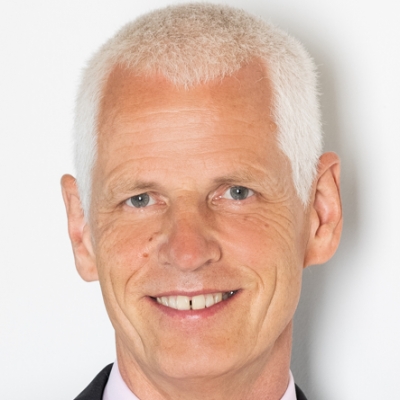Interpreting Germany’s New Grand Coalition Deal: A First Assessment
Germany will continue to gradually slip from the top to the upper middle ranks of the growth league of major European countries. Its current golden decade will end in the 2020s.
January 13, 2018
Shall we breathe a sigh of relief? Germany will likely get a new government just in time for the Easter holiday, with Easter Sunday falling on April 1st this time.
After all-night talks, leaders of chancellor Angela Merkel’s center-right CDU/CSU and the center-left SPD agreed outlines of a program to continue their current coalition for another four-year term.
All in all, German policies will not change dramatically, according to what is known about the deal so far.
Relative to policies that would have been pursued under the failed “Jamaica” coalition talks between Merkel, the FDP and the Greens, Germany will apparently add a bit more to social spending over time. The plan also is to close down its coal power stations at a slower pace.
The EU dimension
Also, with the SPD likely to claim the German finance ministry, future negotiations about European reforms may be a bit less noisy than they might have been otherwise. In terms of substance, Germany will promote some modest EU/Eurozone reforms jointly with France.
Germany’s overall approach to the EU does not change much, though. Germany will agree only to those EU reforms which Merkel can sell to the conservative part of her own base, including the Bavarian CSU. The draft deal reportedly mentions a “European minimum wage” as one element of German proposals for Europe.
The CDU/CSU has reportedly prevailed on one key point: Modest income tax cuts including a gradual reduction of the “solidarity surcharge” by €10 billion until 2021, with no offsetting hike in taxes on top earners.
In return, the CDU/CSU ceded ground to the SPD on other issues such as ending the cap on the contributions employers have to pay for the health-care of their employees and making some future pension entitlements a bit more generous.
As expected anyway, Germany will gradually step up spending on infrastructure and the digital economy. All in all, the country will likely get a fiscal stimulus of 0.1-0.2% of its annual GDP in coming years, the same as in 2017, as Germany is spending some of the proceeds of above-trend growth.
Is the deal good or bad for the German economy?
Success breeds complacency. The deal continues the general trend in German politics — away from pro-growth reforms that has been clearly visible in Merkel’s previous term already.
However, relative to the concessions Merkel had to make four years ago to lure the SPD into government (minimum wage, early retirement at 63 years after 40 years of employment, restrictions on temporary work contracts), the new deal for her fourth term does not seem to spring a major negative surprise at first glance (we have not seen all details yet).
While Germany will remain fundamentally strong, it will continue to gradually slip from the top to the upper middle ranks of the growth league of major European countries. Germany’s current golden decade will end in the 2020s.
Will the SPD base veto the deal?
After first ruling out a new coalition with Merkel’s CDU/CSU, the leaders of the center-left SPD have performed a remarkable U-turn under the pressure of events and Germany’s federal president Frank-Walter Steinmeier.
Whether or not the SPD rank-and-file will support the deal at a special convention of party delegates on 21 January and in a poll of all 443k party members in March remains the key question.
It won’t be easy. Reluctance, if not outright opposition towards a new grand coalition with Merkel’s CDU/CSU, runs high among the SPD’s left-wing faction and its powerful youth organisation. But in the end, the SPD is more likely to say yes than no.
Reasons why the SPD will accept the deal
First, SPD leaders will campaign for the deal. Whatever their misgivings, many party members will hesitate to repudiate virtually their entire leadership, throwing their party into an even worse crisis than it is in already.
Second, the SPD must be afraid of repeat elections in case the party does not enter the government. The five opinion polls published so far in January show the SPD with 20.1% in the polls now, after a 20.5% result in September that was seen as devastatingly low already.
The SPD must be afraid of falling below 20% in repeat elections, especially if the party were to get the public blame for having caused these repeat elections by not joining Merkel now.
The timeline
It will take a while. The CDU/CSU and SPD have taken a key step with the outline for a coalition agreement – but many more steps will need to follow.
The path to a new “grand coalition” (GroKo) is still long, arduous and rocky. The main stumbling hurdles are the vote by the SPD party congress on the result of the exploratory talks (January 21) and the poll by all party members on the final result of formal coalition negotiations (likely to be held in late March).
Takeaways
Germany will continue to gradually slip from the top to the upper middle ranks of the growth league of major European countries. Its current golden decade will end in the 2020s.
With the SPD likely to claim the German finance ministry, Germany will promote some modest EU/Eurozone reforms jointly with France.
The leaders of the center-left SPD have performed a remarkable U-turn under the pressure of events. Whether or not the SPD rank-and-file will support the deal remains the key question.
The SPD must be afraid of falling below 20% in repeat elections, especially if the party were to get the public blame for having caused these repeat elections by not joining Merkel now.

